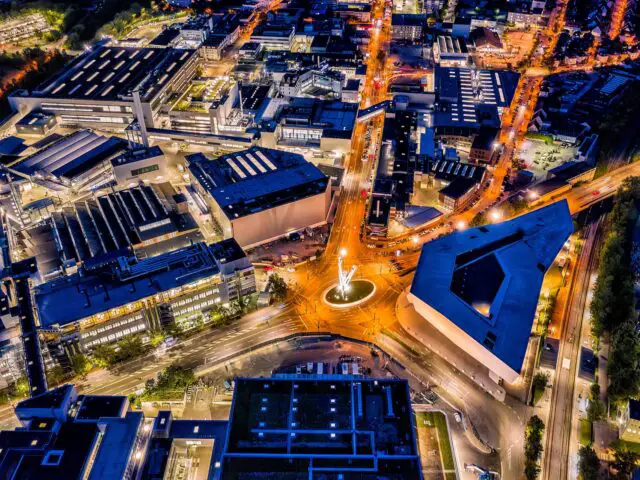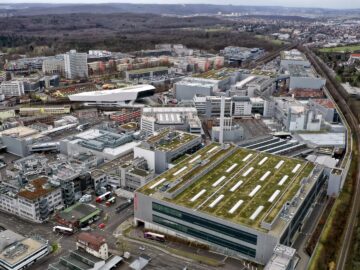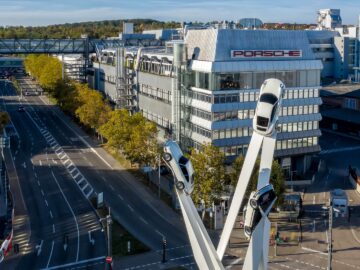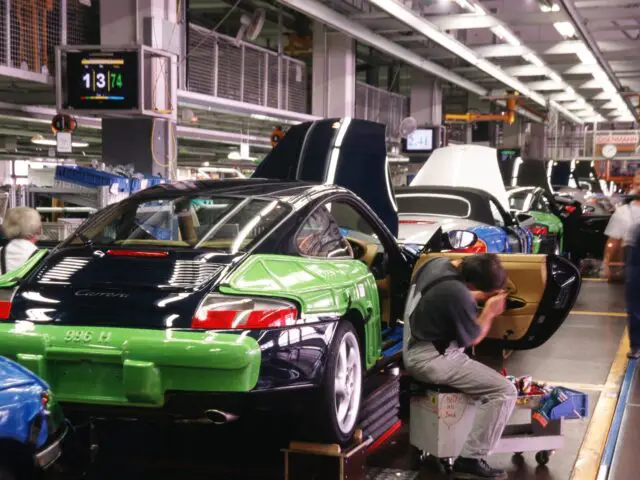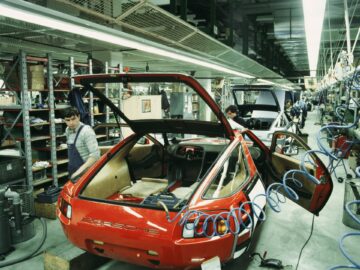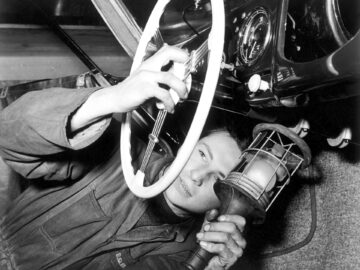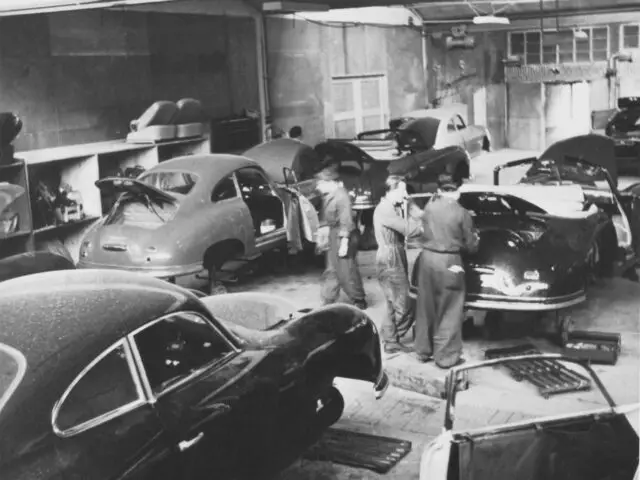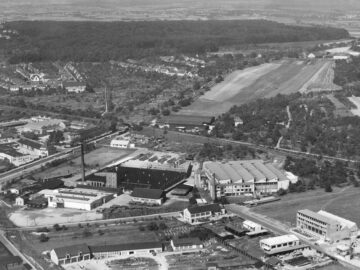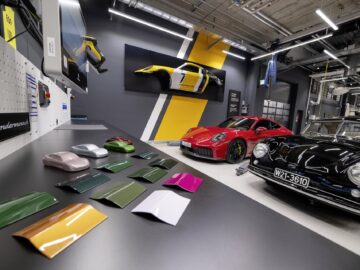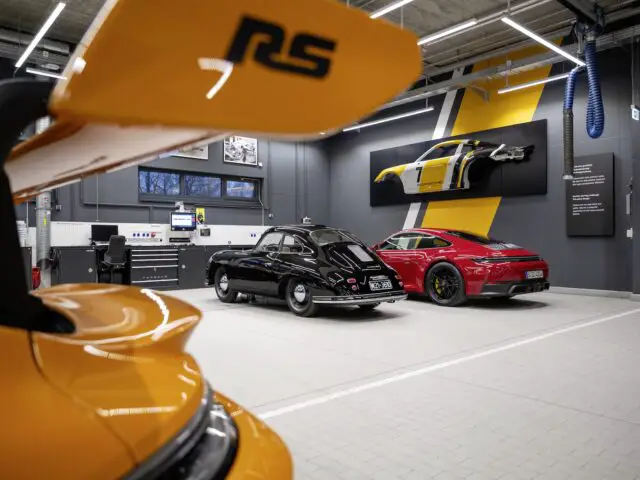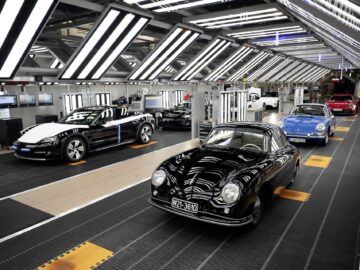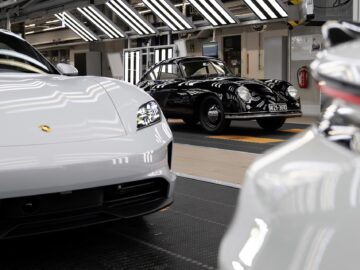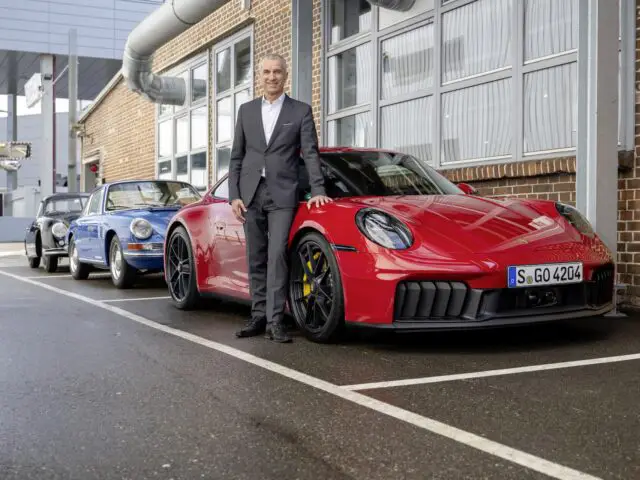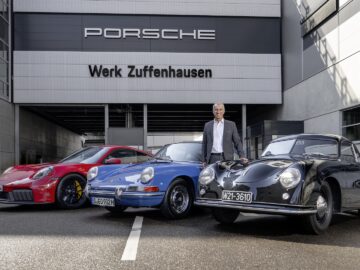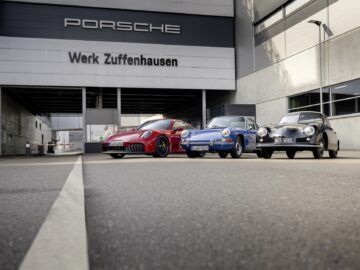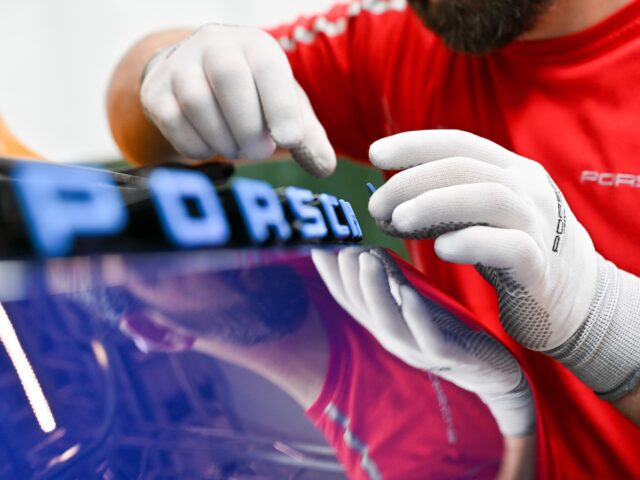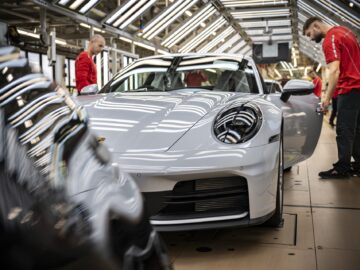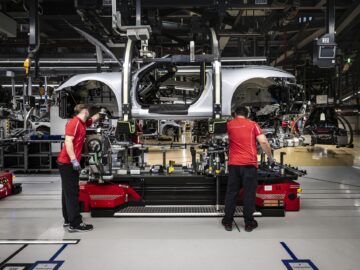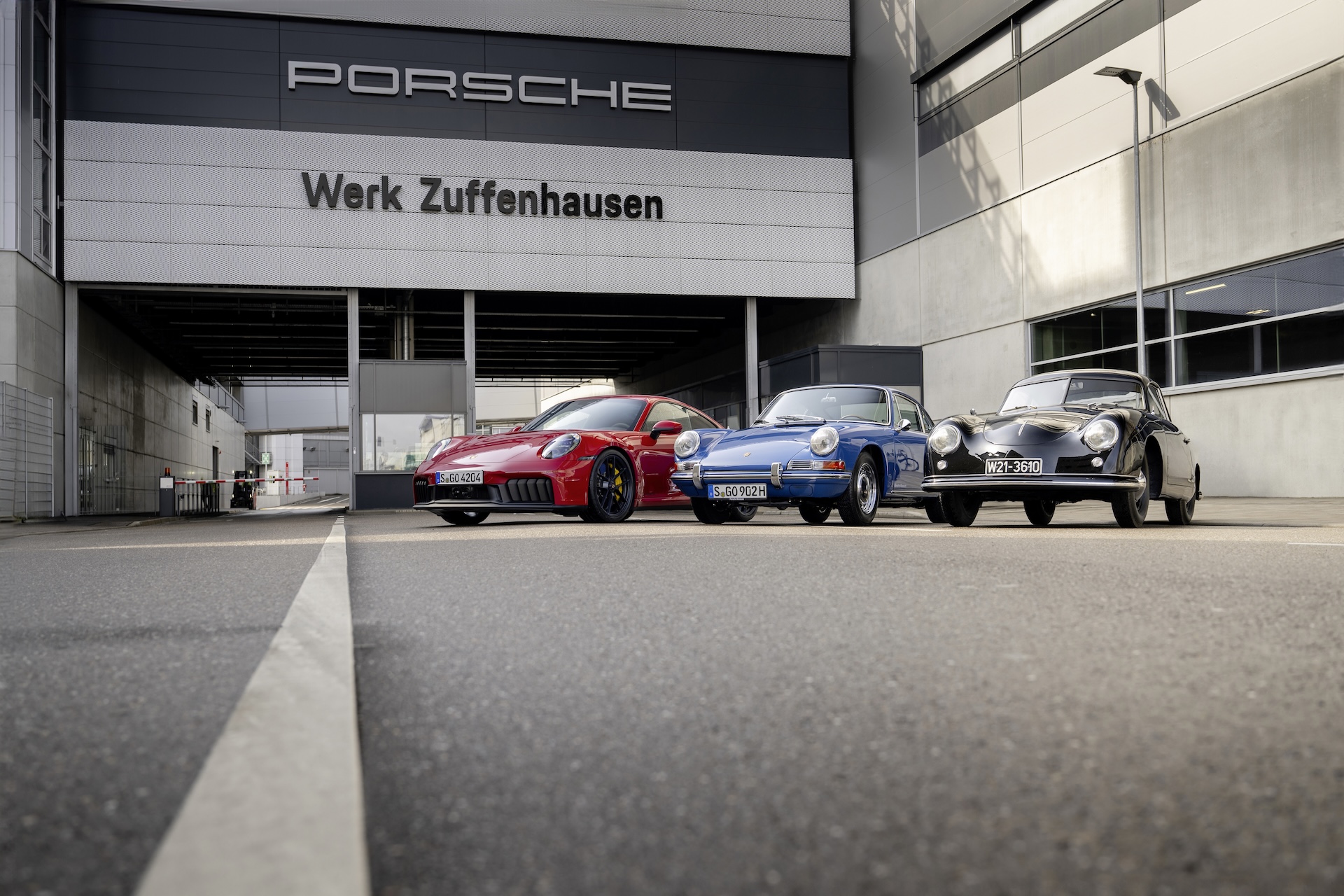Reportage: 75 years of Porsche Zuffenhausen
Porsche in Zuffenhausen, how it began
The first Porsche 356 produced in Germany rolled out of the factory on April 6, 1950, marking the beginning of an extraordinary success story. Over decades, Zuffenhausen in Germany grew to become the center of Porsche sports car production. Engines and electric powertrains are also produced here, and personalization of customer cars also occurs in Zuffenhausen.
75 years ago, production of the Porsche 356 began in Stuttgart. The first car of the new series was completed in Zuffenhausen on April 6, 1950. With series production of the Porsche 356, a success story was in the making. Since then, the location has been inextricably linked with the brand’s sports cars: the 911, mass-produced there since 1964, the 718 model family and the all-electric Taycan.
“Zuffenhausen is and will remain the home of our sports cars. The location embodies pioneering spirit, state-of-the-art production technology and production quality,” explained Albrecht Reimold, member of the Executive Board for Production and Logistics at Porsche AG. “The development of the location shows how Porsche has transformed itself from a small sports car manufacturer to a world-leading company producing exclusive cars.”
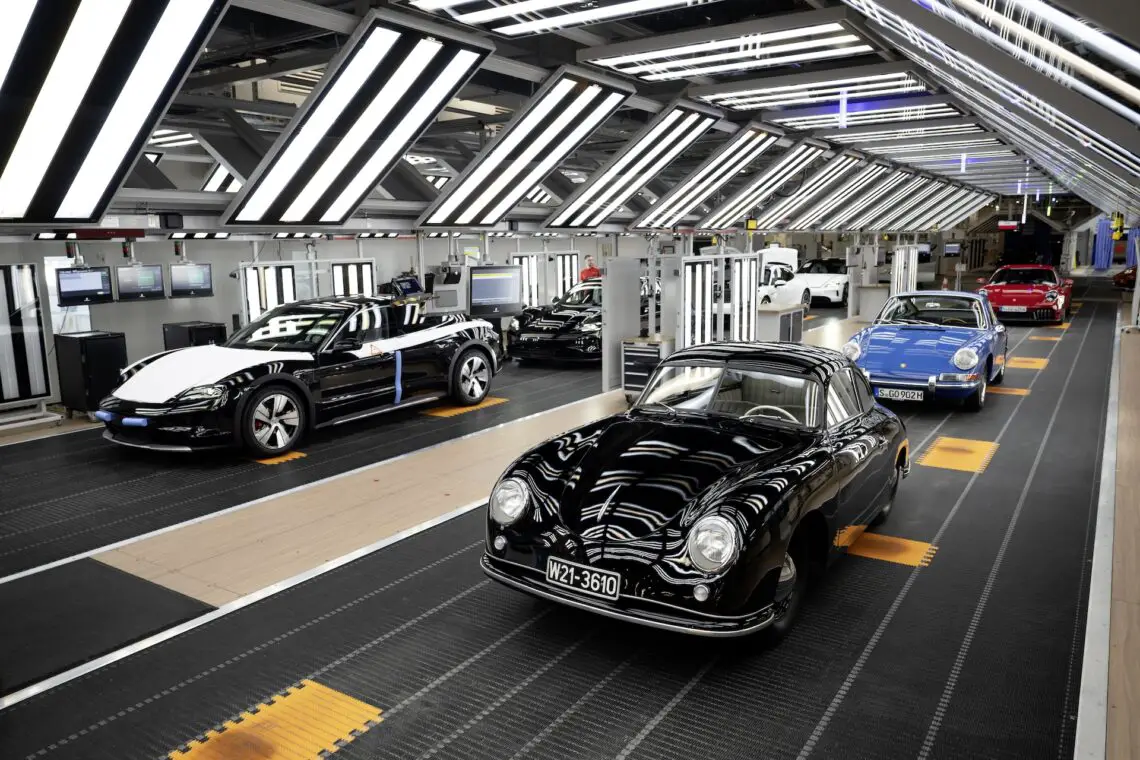
From Gmünd to Zuffenhausen
Porsche began in 1938 in Zuffenhausen, initially as a construction company. Own car production under the brand name ‘Porsche’ did not start until after World War II. On June 8, 1948, the Porsche 356 ‘No.1’ Roadster was given the green light for production. The first 52 examples of the 356 and emergency rear seats were hand-built between 1948 and 1950 in Austria based on aluminum bodies and served as a model for the later 356 from Stuttgart.
After returning to Swabia, Porsche’s factory was occupied by the Allies. While the original construction company was located in a barracks on Schwieberdinger Strasse, Porsche rented space in the Reutter Plant II across the street for engine production and assembly. In return, the coachbuilder was commissioned to build complete coachwork, which was produced at the Reutter Plant I on Augustenstrasse in western Stuttgart until 1953.
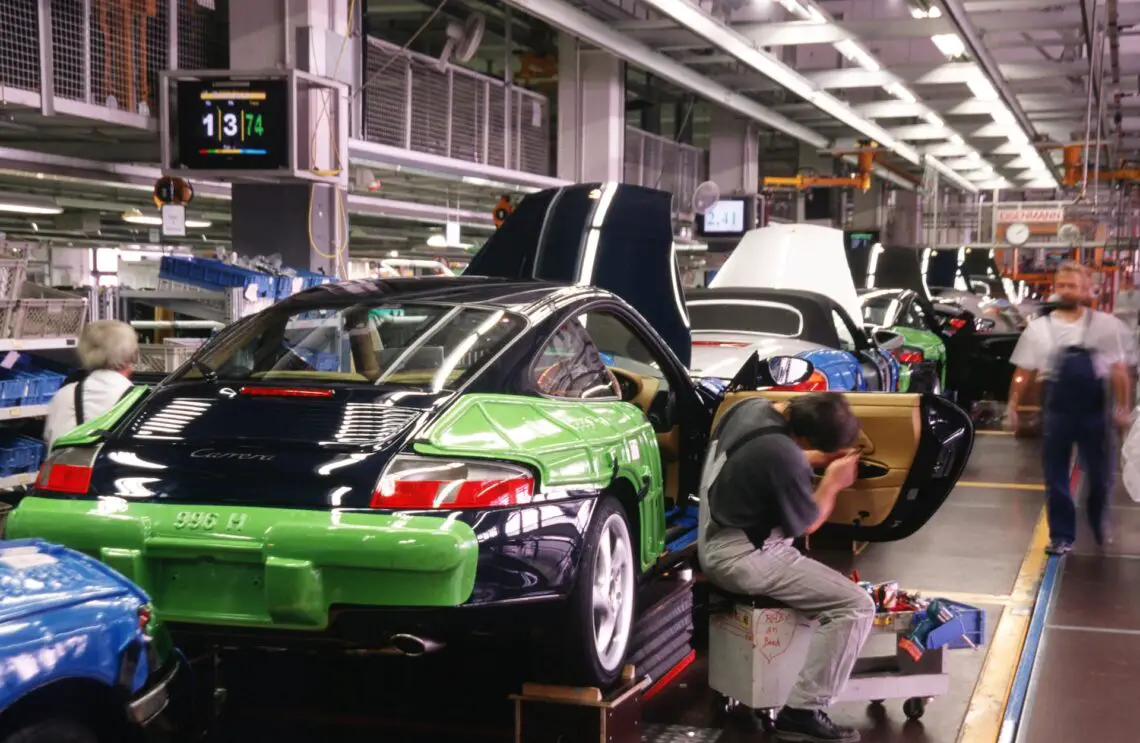
From Work 1 to Work 2
The first Porsche 356 was completed in Zuffenhausen on April 6, 1950. By the end of 1950, Porsche had built 317 cars. With early successes in motorsport and huge demand in export markets, the 356 quickly became a huge success for the brand. Because the handover of Werk 1 was delayed by the U.S. military administration, Porsche commissioned renowned Stuttgart architect Rolf Gutbrod to design Werk 2.
This assembly hall, built on land sold to Porsche by Reutter, was commissioned in 1952 and expanded as early as 1954. At the end of 1955 Porsche also returned to its own accommodation at Werk 1 in Zuffenhausen. This location would house the design department, the commercial staff, the repair shop for company and customer cars, and the test and development department for racing cars. Production, sales and parts supply remained in Werk 2.
Flexible production of different variants on a shared line
In 1960, engine production began at Werk 3, and on December 1, 1963 Porsche took over the body shop from Reutter and its approximately 1,000 employees, almost doubling the workforce. This also secured Porsche the location in Zuffenhausen. That same year, the first 911, then known as the 901, rolled off the production line in Zuffenhausen. By the end of production in 1965, the sports car manufacturer had produced some 78,000 units of the 356.
As early as the 1950s, Porsche in Zuffenhausen applied a production principle that still applies today: flexible production of different variants on a shared line. The Coupe, Cabriolet, Roadster and Speedster variants of the Porsche 356 were all produced in parallel and assembled individually. To this day, it is characteristic of the location that all 911 models and variants – from the Carrera to the GT top models and Cup cars – are manufactured on one production line. The extensive interior equipment takes shape in the factory’s saddle shop.
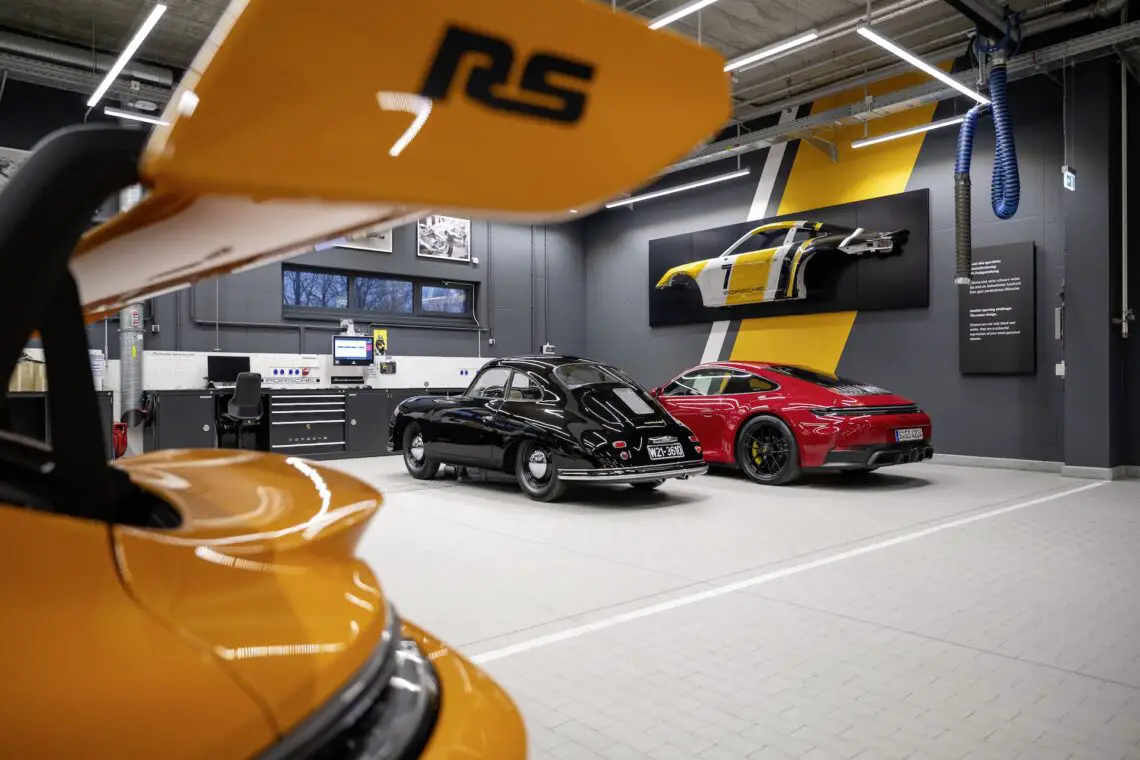
From the 356 to the 911
In the 1960s, the 911 successfully succeeded the 356. Production was expanded and new facilities were built. Engine construction was outsourced and Work 2, which was constantly being expanded anyway, received an additional hall. Building 41 was created in 1969 as a multi-story production site for final assembly. Porsche optimized production flow and increased capacity.
In 1973 about 4,000 people worked at Porsche and by the end of the 1980s that number had more than doubled, divided among the three sites: production in Zuffenhausen, the Center for Research & Development in Weissach and offices in Ludwigsburg. In the following decades, the Zuffenhausen site gradually expanded further thanks to growing production figures. In the 1970s and 1980s, models with the engine at the front, such as the 928, 944 and 968, were produced in addition to the 911.
Airlift
In the 1980s, body production in Zuffenhausen again reached the limits of its capacity. The growing demand for sports cars required an expansion of the production facilities. In 1988, Work 5 was built, designed for highly flexible body production. A visible symbol of the new production logic was the conveyor bridge. From then on, this brought the produced bodies across the busy Schwieberdinger Strasse at a height of about 35 meters, directly to the final assembly line in Work 2 on the other side.
Another important change in the history of the plant was the preparation for the production start of the all-electric Taycan, which went into production in 2019. As part of this transformation, Porsche created new production areas: a new body hall was built in Werk 5, while a modern paint shop was installed in Werk 1, fully tailored to the specific requirements of e-mobility. At the same time, Porsche built a modern assembly facility in Werk 2, opposite Adestrasse. A second conveyor bridge was built over Schwieberdinger Strasse to efficiently connect the new production logistics.
Made in Zuffenhausen
A symbol of precision, innovation and outstanding craftsmanship, Zuffenhausen is where Porsche combines tradition with state-of-the-art production technology. Autonomous transport systems, a central factory cloud and the use of artificial intelligence are just some of the many innovations employed in the production of the “Made in Zuffenhausen” sports cars. The production center for the 911 and the all-electric Taycan is located at the Zuffenhausen site. In addition, two engine plants in northern Stuttgart produce the boxer engines for the sports cars and the V8 engines for the four-door internal combustion engine models, as well as the electric motors for the Taycan and Macan.
In addition, the site houses a total of three manufacturers: Porsche Exclusive Manufaktur – where customer cars are personalized in detail -, the Sonderwunsch department – where unique cars are created – and CFRP Manufaktur, where exterior body parts are manually assembled for models with special lightweight designs, such as the 911 S/T and the 911 GT3 RS.
In addition to Zuffenhausen and Weissach, Leipzig also plays a key role in the world of Porsche. From 2002 to 2016, the Cayenne rolled off the assembly line there, followed by the Carrera GT from 2003 to 2006. The Panamera sports sedan has been built there since 2009, as has the Macan (since 2014). In view of the latter, Porsche expanded the Leipzig plant into a full-fledged factory between 2011 and 2014.
Quest for the perfect sports car
At the Zuffenhausen facility, Porsche combines the advantages of industrial series production with the exclusivity of uniquely manufactured sports cars. “Zuffenhausen is and remains the home of our sports cars. Here we build cars that fascinate the world, through a production process that has combined craftsmanship and technical know-how for 75 years,” Reimold emphasizes. With this anniversary, Porsche is not only celebrating its impressive past, but also looking to the future. The Zuffenhausen location, like its counterpart in Weissach and the Leipzig plant, stands for pioneering technologies, production quality and Porsche’s relentless pursuit of getting ever closer to the perfect sports car.
